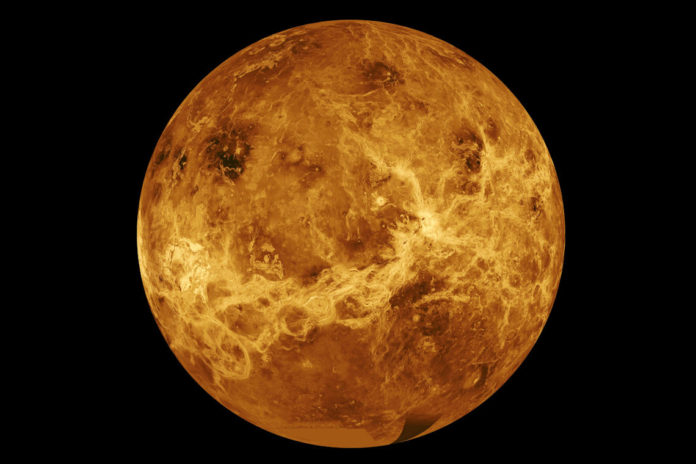Venus is the second planet from the sun. It is named after Venus, the Roman god of love and beauty. The planet of love is the brightest planet seen in the night sky. Venus is also called Earth’s twin because it is similar in size and mass.
It is a terrestrial planet with a rocky surface with no satellites. Venus is also extremely hot and does not sustain life as we know it.
Surface of Venus
Volcanic Plains: The surface of this planet is relatively young. The planet’s surface has few visible meteor impact craters. Volcanic activity produced vast lava flows that covered the planet. As a result, meteor impact craters are covered up by the lava flows.
Surface Temperatures: Venus has a very thick atmosphere. This produces atmospheric pressures 100 times greater than on earth. The thick atmosphere has a dense cloud cover that traps solar energy. The result is extremely high surface temperatures that vary from 400-700 °K.
Atmosphere: The thick atmosphere has air pressures that are 92 times greater than Earth’s. Most of the atmosphere is carbon dioxide with small amounts of nitrogen and sulfur dioxide. In turn, planetary clouds are made up of droplets of sulfuric acid.
Geologic Activity: There is a lot of geologic activity on the planet. Volcanic activity creates landforms through lava flows. However, landforms are also caused by folding of the planet’s surface. This folding results in the uplifting of the planet’s surface.
Facts About Venus
| PROPERTIES | MEASUREMENTS |
|---|---|
| Distance from the sun | 108.9 million kilometers (aphelion), 107.5 million kilometers (perihelion). |
| Size | radius of 6.1 thousand kilometers. |
| Mass | 82% that of earth. |
| Gravity | 90% that of earth. |
| Satellites | none. |
| Rotation | 243 days (length of a day). |
| Revolution | 224.6 days (time to orbit the sun). |
| Surface Temperatures | 400-700 °K. |
Reflections
Vocabulary
- atmosphere
- planet
- terrestrial planet
Notes
- Venus is similar to the earth is size and mass.
- It has a solid surface and a thick atmosphere.
- The planet’s atmosphere creates temperatures too high for human life.

